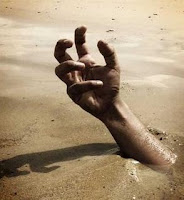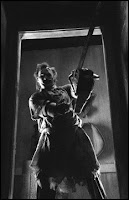Horror Tip: All Alone

Going to start of a new, hopefully, weekly feature on the blog called "Horror Tip". This will be tips of lesser known games, books, movies, etc with some kind of relation to horror. Hopefully it will give you all some entertainment tips! First out will be a small game called "All Alone". Name: All Alone Type: Game (Interactive Fiction) Link: Info and download All Alone is a short work of Interactive Fiction taking place in an apartment a rainy night. It is very atmospheric and I think it gives a good hint on what is possible with pure text in a game. Make sure that you play this game in a dark room and perhaps with some spooky ambient track in the background. If you are new to Interactive Fiction (IF) then a guide can be found here . Basically IF games are text adventures and you type the actions you want to do. This gives a very special feel for the game and gives lots of options for the player in what actions can be done. It can also lead to annoying "gues





